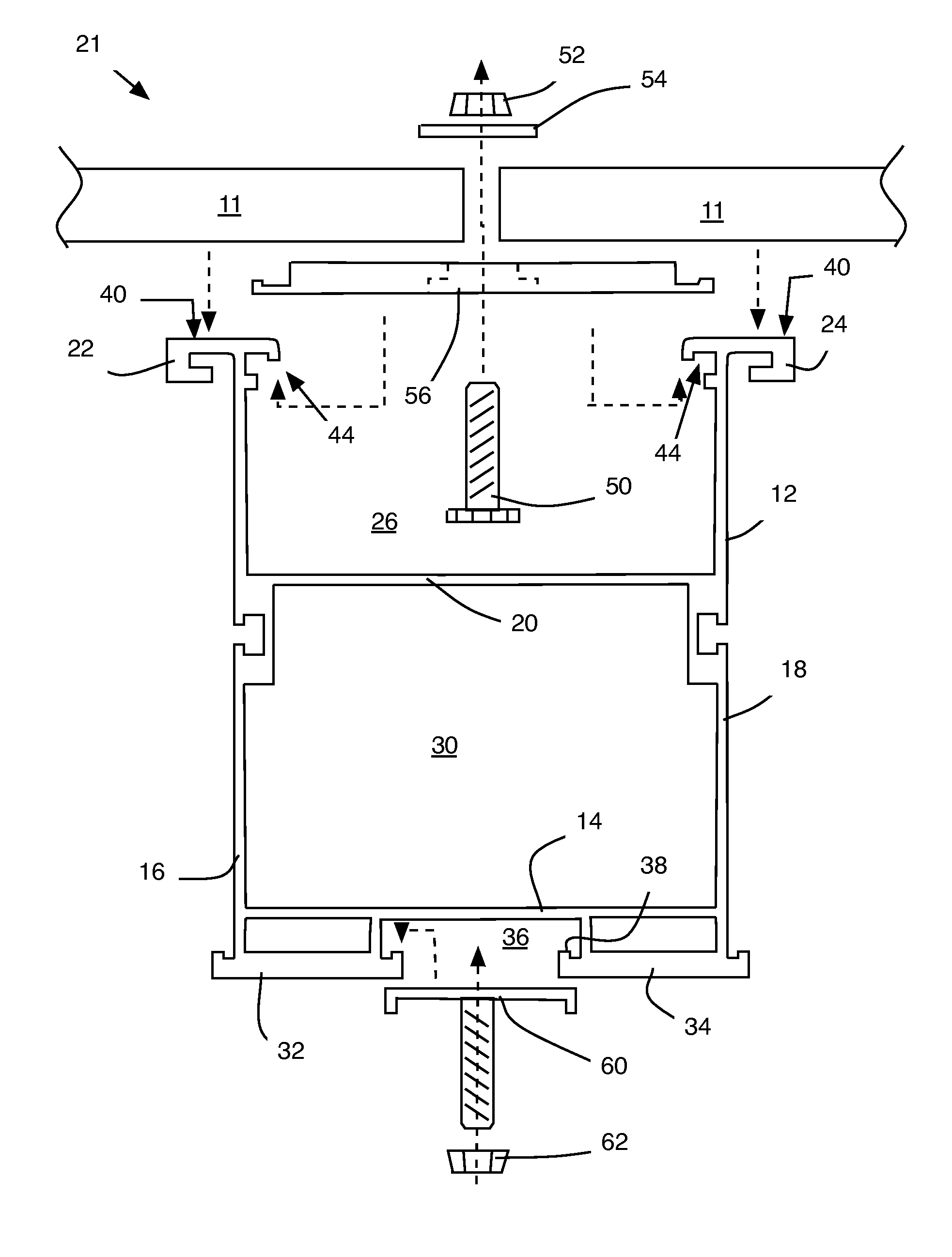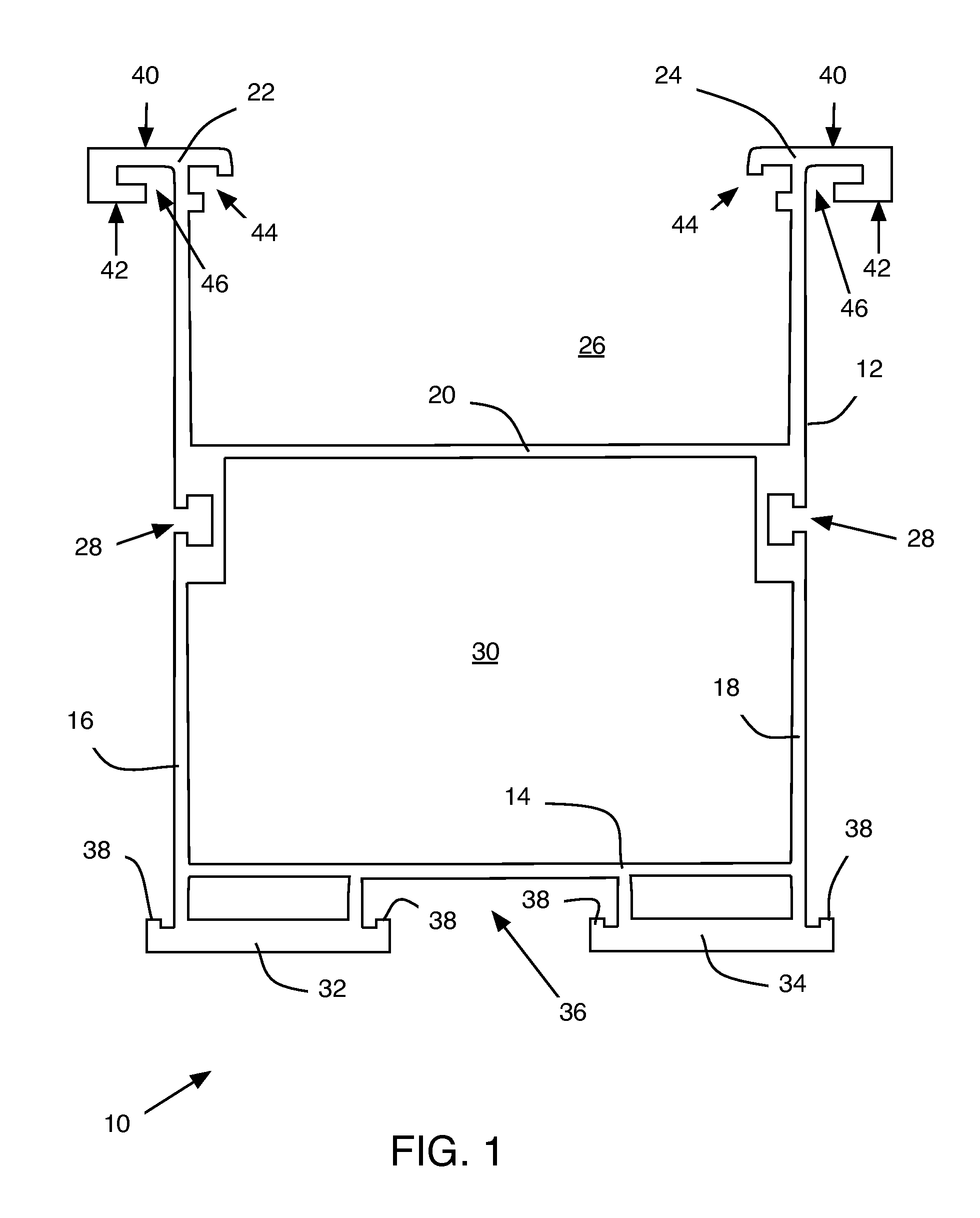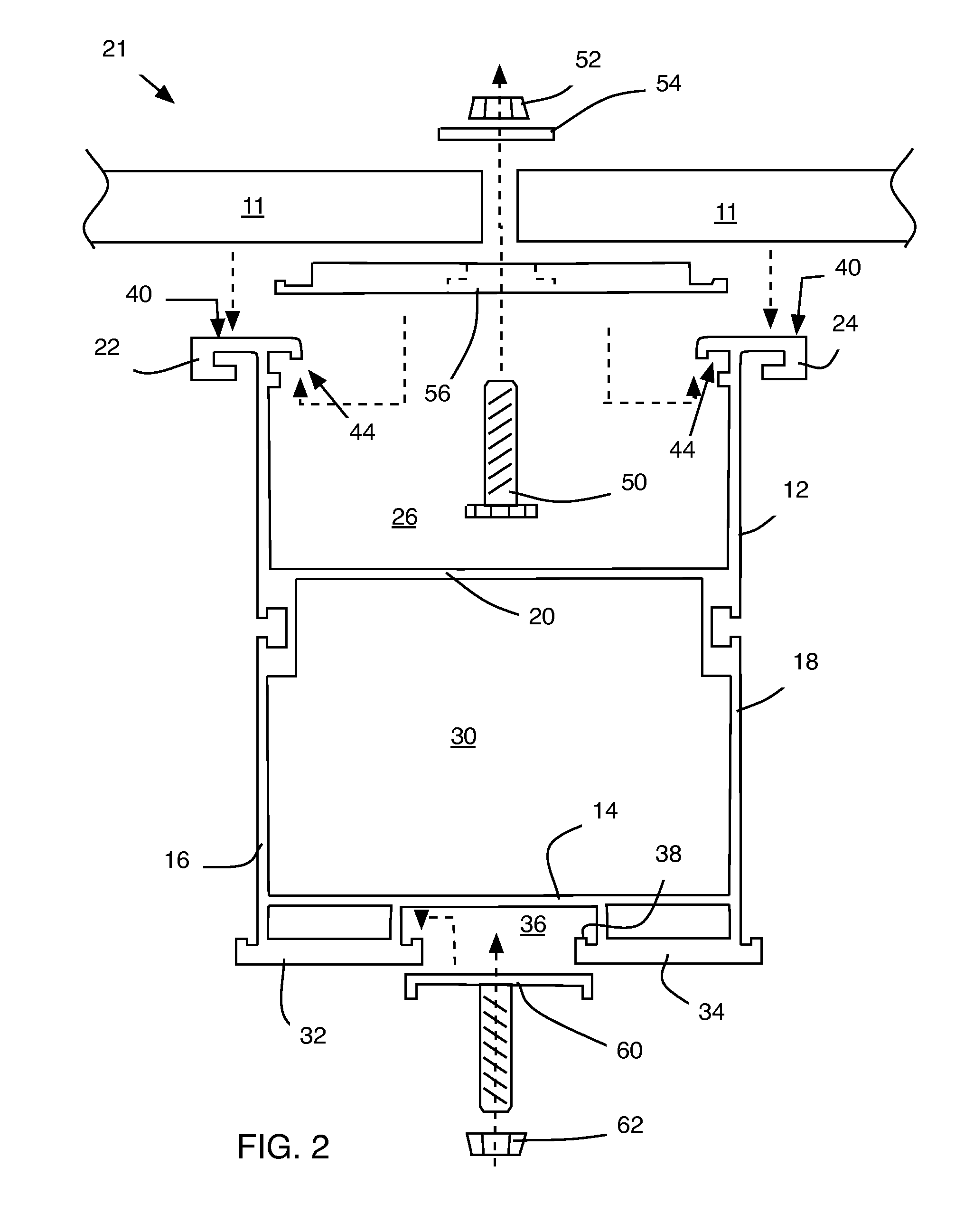Building integrated solar array support structure device, system, and method
a solar array and support structure technology, applied in the field of building integrated solar array support structure devices, systems and methods, can solve the problems of deterioration of the physical and electrical properties of solar arrays, significant reduction of the efficiency of solar arrays, and state of the art mounting systems and structures and methods that have not provided an effective, cost-effective solution, and achieve the effect of economic installation
- Summary
- Abstract
- Description
- Claims
- Application Information
AI Technical Summary
Benefits of technology
Problems solved by technology
Method used
Image
Examples
Embodiment Construction
[0061]Possible preferred embodiments will now be described with reference to the drawings and those skilled in the art will understand that alternative configurations and combinations of components may be substituted without subtracting from the invention. Also, in some figures certain components are omitted to more clearly illustrate the invention.
[0062]With general reference to all the figures of the drawing, the various preferred embodiments of the present invention contemplate supporting, coupling, and otherwise interfacing with common solar modules. Commonly, almost all solar modules all have an aluminum frame all the way around the module. The glass and solar cells are actually only a ⅛″ thick or so but the aluminum frame around it is usually a 1″ deep or so all the way around (a module with aluminum frame is shaped exactly like a box lid that can slide down onto a box).
[0063]Accordingly, the present invention includes both north-south structural members and east-west weatheri...
PUM
 Login to View More
Login to View More Abstract
Description
Claims
Application Information
 Login to View More
Login to View More - R&D
- Intellectual Property
- Life Sciences
- Materials
- Tech Scout
- Unparalleled Data Quality
- Higher Quality Content
- 60% Fewer Hallucinations
Browse by: Latest US Patents, China's latest patents, Technical Efficacy Thesaurus, Application Domain, Technology Topic, Popular Technical Reports.
© 2025 PatSnap. All rights reserved.Legal|Privacy policy|Modern Slavery Act Transparency Statement|Sitemap|About US| Contact US: help@patsnap.com



